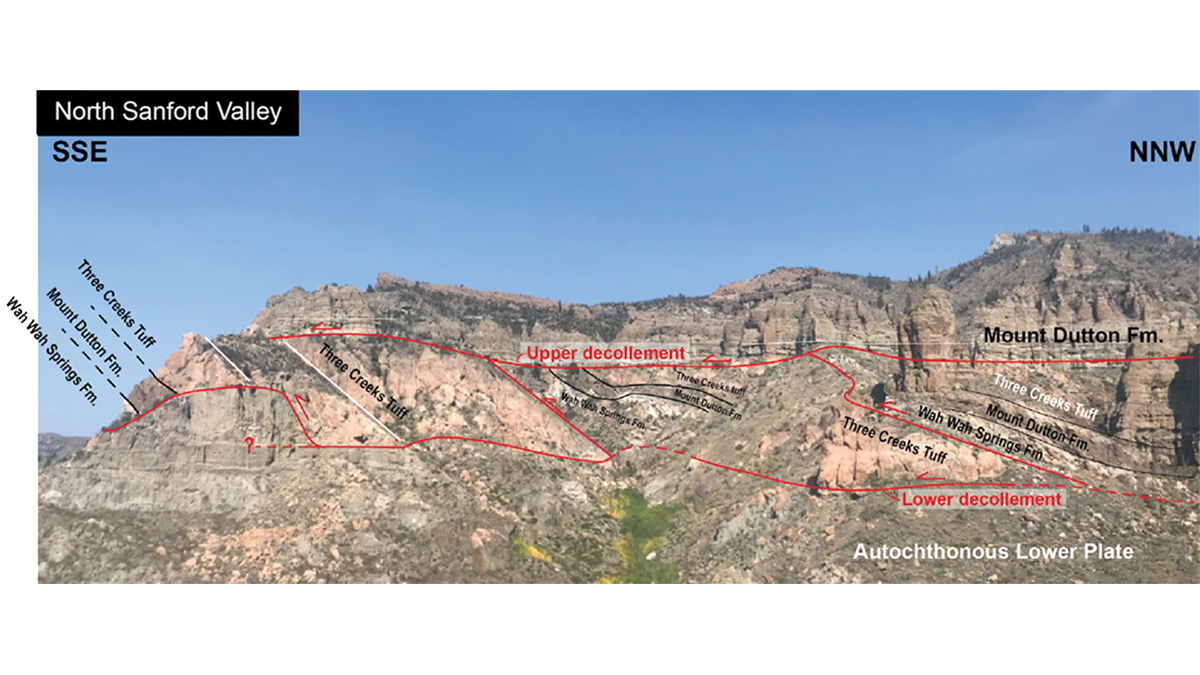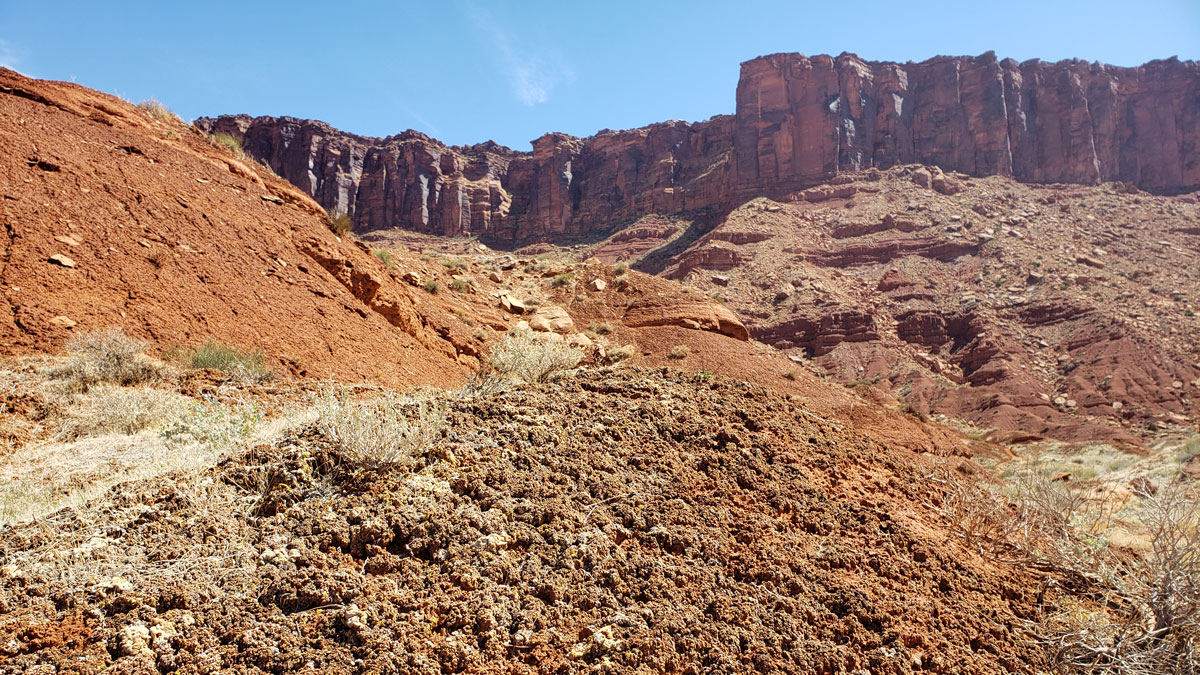Detailed observations of the giant Sevier gravity slide in Utah show that the exceedingly low basal friction required for its rapid emplacement was developed by trapped thermally pressurized fluids.
Utah
Climate Change Leads to Decline in Lichen Biocrusts
As summer temperatures continue to rise, important biocrust-forming organisms in the American Southwest may be lost.
Rock Music in Utah
Three-dimensional models could help forecast rock tower frequencies—and seismic impacts—around the globe.
When Climate Ruled the Dinosaurs of Grand Staircase
Living in Geologic Time: Navigate the prolific boneyards and shifting boundaries of Grand Staircase-Escalante and Bears Ears National Monuments.
Tracking Pollution in the Breeze, with Trees
New research outlines how pine needles offer a simple, low-cost means of assessing particulate matter pollution.
Podcast: Songs of the Arches (with Helicopters)
Utah’s famous bridges and spires hum with a deep, earthly music, just below the threshold of human perception.
The Delicacy of Arches
Living in Geologic Time: How long will Utah’s arches grace the red rock desert?
An Ice Sheet’s Footprint on Ancient Shorelines
Researchers combine observations of ancient shorelines and properties of Earth’s crust to infer the size of the Laurentide Ice Sheet during the last glacial cycle.
Modern Chemicals from Mystery Source Taint Fish in Utah Lake
Utah Lake’s fish contain high levels of a potential carcinogen. Could removing some bottom-feeders reduce this contamination?
Studying Martian Rocks Without Leaving Planet Earth
Matching Martian rock formations to those found on Earth can help researchers learn more about the Red Planet.










